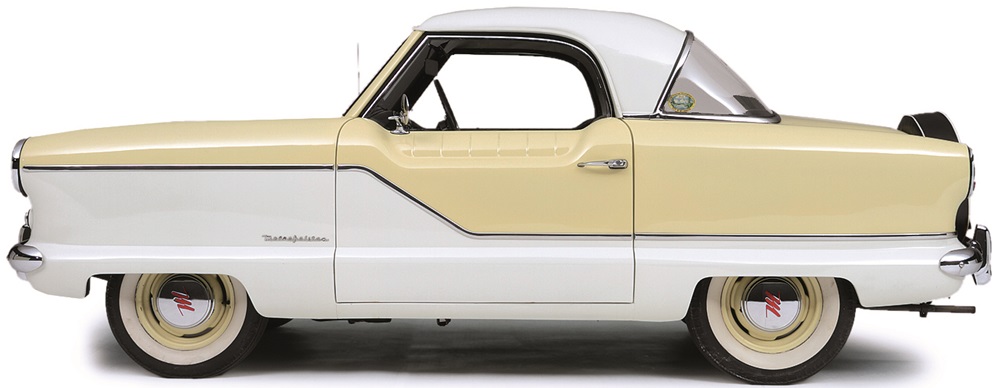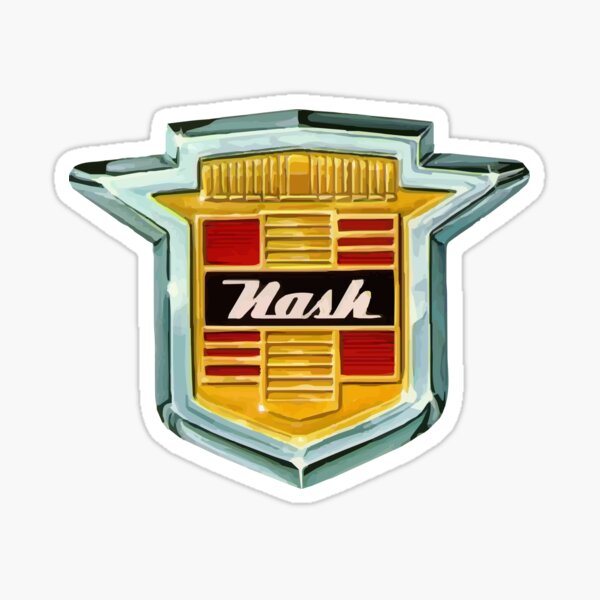1957 Nash Metropolitan

The descriptions of the Classic Cars in the Directory were partly generated or supplemented with the help of artificial intelligence (AI). The content may occasionally not always be entirely accurate or factually correct despite careful checking.
The Nash Metropolitan, produced from 1954 to 1962, was an iconic microcar that now holds a special place in automotive history. Among the most famous examples of this line is the 1957 model, famous for its stunning design and impressive technical features.
At the heart of the 1957 Nash Metropolitan is its inline four-cylinder engine, which produces 52 horsepower and 80 lb-ft of torque. This power plant is capable of propelling the Metropolitan to a top speed of 70 miles per hour, which seems modest by today's standards but was impressive for its era. The engine is coupled to a three-speed manual transmission, which provides a smooth and precise shifting experience.
The iconic design of the Nash Metropolitan 1957 is characterized by its striking two-tone color scheme, bold chrome trim, and its unique vertical grille. The car’s body is mainly made of steel and has an overall length of 149 inches, with a wheelbase of 85 inches. The car’s front track measures 50 inches, while the rear track is 51 inches, both ensuring excellent stability and traction. The Metropolitan was a lightweight car, with the 1957 model having a curb weight of only 1,785 pounds.
The interior of the 1957 Nash Metropolitan was spacious, considering its small size. The cabin was designed for two passengers, and seats were well padded and comfortable, while the dashboard was a mix of chrome, metal, and Bakelite-like plastic. The instrument cluster was minimalistic, with just the speedometer, fuel gauge, and engine temperature gauges provided for the driver. The car’s heating system was a simple air duct under the dashboard, and there was an ashtray and a lighter on the right-hand side.
The suspension system of the Metropolitans consisted of a coil spring-based independent front suspension and a live-axle system at the rear. The car’s steering system was a recirculating ball system that provided excellent handling and a tight turning radius. The brakes were four-wheel drum brakes at each corner that could reliably slow down the car.
In conclusion, the Nash Metropolitan 1957 was an iconic car that still holds a special place in the hearts of car enthusiasts everywhere. Its technical features, iconic design, and comfortable interior made it an excellent choice for those looking for a microcar that was both stylish and efficient. The car’s excellent reliability, ease of maintenance and quality ensured that it was a car that enjoyed a long lifespan in a rapidly changing automotive landscape.
Milestones
- Introduction of the Nash Metropolitan as a collaboration between Nash Motors and British car manufacturer, Austin in March 1954 - Production of the first Metropolitan model, the Series I, in October 1953 - Launch of the Series II model in 1955 with improvements including a more powerful engine and better suspension - Introduction of the Series III model in 1957, featuring a restyled exterior and updated interior - Release of the Metropolitan Convertible in 1959, which was only produced for one year due to low sales - Production of the last Metropolitan model, the Series IV, in 1962 before Nash Motors merged with American Motors Corporation.Technical
- Engine type: 1.2L Austin A40 inline-four - Engine power: 42 hp - Transmission: 3-speed manual or 4-speed manual - Wheelbase: 85 inches - Length: 149.5 inches - Weight: 1,785 pounds - Top speed: 70 mph - Fuel economy: approximately 40 mpg - Front suspension: Independent suspension with coil springs - Rear suspension: Solid rear axle with semi-elliptic leaf springs - Brakes: Hydraulic drum brakes on all four wheels - Steering: Rack-and-pinion steering - Body style: 2-door sedan or convertible - Production years: 1954-1962 (1957 model year) - Production volume: Approximately 6,000 for 1957 model year.